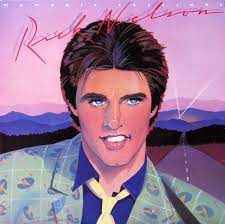Tutorial Pricing: $3.25ea OR any 10 for $10
(use code "Any10410" at checkout)
Paid Requests for $25ea
(comes with any 8 freebies -> so 9 for $25)
100's Of Free Demos & Chord Sheets
- Home
- 50s & Vegas
- Popular Music From the 50s
Popular Music From The 50s
On The Acoustic
Let's learn some popular music from the 50s on the acoustic guitar that you can use to amaze your family, friends and observers. You're in the right place.

Jump menu to quickly access the sections.
Bobby Day - Rockin Robin
Bobby Vee - Take Good Care Of My Baby
Buddy Knox - Party Doll
Carl Perkins - Everybody's Tryin To Be My Baby
Chubby Checker - Let's Twist Again
Chuck Berry - Johnny B Goode, Roll Over Beethoven, Sweet Little 16, Promised Land, You Never Can Tell
Del Shannon - Runaway
Eddie Cochran - Hallelujah I Love Her So, I Remember, Jeannie Jeannie Jeannie, Twenty Flight Rock
Fats Domino - Ain't That A Shame, Blueberry Hill, I'm Walkin
Frankie Avalon - Venus
Jerry Lee Lewis - Just Dropped In, Whole Lotta Shakin
Jimmy Rogers - Honeycomb
Johnny Rivers - 7th Son, 500 Miles. Baby I Need Your Lovin, Memphis Tennessee, Poor Side Of Town, Secret Agent Man, Slow Dancing, Summer Rain, The Tracks Of My Fears
Los Lobos - We Belong Together
Melvin Endsley - The Blues Don't Mean A Thing
Otis Day & The Nights - Shama Lama Ding Dong
Ritchie Valens - Come On Let's Go, Donna
The Crows - Gee
The Teddy Bears - To Know Him Is To Love Him
Popular Music From The 50s
Chords, Lyrics, Demos, Tutorials
Bill Haley & The Comets Songs

Rock Around The Clock was not written by Bill Haley but by Max Freedman and James Myers in 1952. Bill Haley recorded the song in 1954 and it took only two takes combined to make the final version.
And because of a delay arriving at the studio to record the song, Sammy Davis Jr's studio time was delayed while he waited in the hallway as Bill Haley recorded this song. Bill Haley had a #1 with this song and can be found on his album of the same name.
There is a lead break in this one playing the three chords of A, E7 and D7. For rhythm play a down up down up down up and a few down-strokes.
Jump To Top
Bobby Day Songs

Rockin' Robin was a big hit song in 1958. It was written by Leon René, using the name Jimmie Thomas, and sung by Bobby Day. It reached number two on the Billboard Hot 100 chart and was number one on the R&B sales chart for a week. Michael Jackson also recorded a version of the song in 1972, which did well too.
This one I play in standard tuning using a down up down up rhythm pattern with some walking bass. A little picking required while playing the chords G, C, D and C7.
Jump To Top Of Popular Music From The 50s
Bobby Vee Songs

Take Good Care Of My Baby was co-written by Carole King and Gerry Goffin but made famous by Bobby Vee in 1961. Vee had a #1 hit with this song.
It can be found on the album of the same name.
I play this one with a Drop D Tuning and a capo on the 3rd fret. A few riffs but no lead while playing the chords D, Bm, G, A7 and Daug. Play a down down up down up down up rhythm and repeat.
Jump To Top
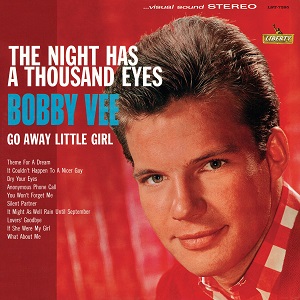
The Night Has A Thousand Eyes is the name of the album and the single released back in Feb of 1963. The single peaked at #3 in both the US and the UK.
The original key here is one fret higher and they also do a one fret key change but here I'm staying in one key all the way through the song. No lead but a fast paced down down up down up down up rhythm pattern is required while you play the chords D, F, G, A, Gb, B7, E, A7, A7sus, Bm, Em and a Gbm.
Jump To Top
Buddy Knox Songs

Party Doll is a rock 'n' roll song from 1957, written by Buddy Knox and Jimmy Bowen. Buddy Knox, a teenager from Happy, Texas, wrote it behind a haystack on his family farm in 1948. He recorded it in Clovis, New Mexico, with his friends Jimmy Bowen and Don Lanier.
Knox's sister and some friends sang backup vocals, and a girl from Clovis High School played the cymbal. The song became popular in Amarillo and later spread across the U.S. after Roulette Records picked it up. It reached number one on the Top 100 chart in March 1957.
Three chords in this one are A, D and E playing a root down root up down up and repeat rhythm pattern in standard tuning. A little picking in this one.
Jump To Top Of Popular Music From The 50s
Carl Perkins Songs

Everybody's Tryin' To Be My Baby was written in 1936 by Rex Griffin but often given credit to Carl Perkins who recorded the song in 1957 and covered by The Beatles in 1964.
To my knowledge the song was released as a single in 1957 but I'm not sure if it charted. The track is from the album "Dance Album Of Carl Perkins".
This one I play in standard tuning using the rhythm pattern root down root up down up and repeat. No lead work here, just a few riffs while playing thew chords E, A and B7.
Jump To Top
Chubby Checker Songs
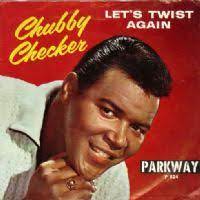
Let's Twist Again was released in 1961 and probably his best know song, reaching #8 on Billboard and #3 on the Cash Box charts. The song won a Grammy in 1962. He also recorded the song in German and Italian.
The song was #1 in the UK, Holland and Belgium. The song is found on the album of the same name.
Play this with a capo 3rd fret for the original key using a down down up down up down up and repeat rhythm pattern. A bit of lead in here also with the chords G, C, Am, F and C7.
Jump To Top Of Popular Music From The 50s
Chuck Berry Songs (5)
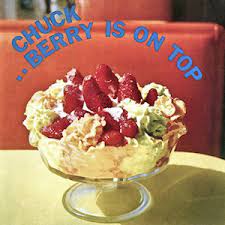
Johnny B Goode was written in 1955 but not recorded and released until 1958. Chuck Berry said later on the song was a reflection of his early days and changed the lyrics country boy from colored boy to ensure the song received radio play. The opening riff was lifted from a song from 1946 entitled "Ain't That Just Like A Woman".
The song has become one of the most recognized and influential rock and roll songs of all time.
"Johnny
B. Goode" has been covered by many artists over the years and has been
featured in numerous films, TV shows, and commercials.
Standard tuning works here while playing the A, D and E7 chords using the down up down up and repeat rhythm pattern or play all down-strokes. Yes there is lead work in this number.
Jump To Top
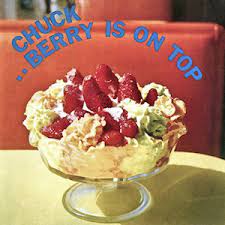
Roll Over Beethoven is a rock and roll song written by Chuck Berry, which was released in 1956. The song became a hit, reaching number 29 on the Billboard Hot 100 chart and helping to establish Berry as a major force in the emerging rock and roll genre.
The
song's lyrics describe a desire to leave classical music behind in
favor of rock and roll, with Berry urging the titular composer, Ludwig
van Beethoven, to "roll over" in his grave and make way for the new
music.
"Roll Over Beethoven" has since become a staple of rock and roll music, and has been covered by many artists over the years, including The Beatles and Electric Light Orchestra.
The original key is a fret higher than pitch using the chords D, A and G. There is lead work in this one while playing either the down up down up rhythm pattern or playing steady down-strokes.
Jump To Top

Sweet Little 16 was recorded and released in Jan of 1958 and managed a #2 on the Billboard chart. Berry surpassed this with a number one eventually, but not until 1972 with My -Ding-A-Ling.
The song became a massive hit, reaching number two on the Billboard Hot 100 chart and helping to solidify Berry's status as one of the biggest stars in rock and roll music.
"Sweet Little Sixteen" has been covered by numerous artists over the years, including The Beatles and The Beach Boys. The song has also been referenced in popular culture, appearing in films, television shows, and commercials.
Three chords in this one which are A, D and G with Drop D Tuning and a down up down up down up rhythm pattern with some chops. No lead work in this one.
Jump To Top Of Popular Music From The 50s

Promised Land a.k.a The Promised Land follows the melody of an old American folk song called The Wabash Cannonball. He had just gotten released from prison when this song was released in Dec 1964 and reached #41 on Billboard a month later. In fact, Berry used a prison atlas to chart the travels listed in the song.
The song tells the story of a man who is traveling from Norfolk, Virginia to the "promised land" of Los Angeles, California. The lyrics describe the man's journey, his encounters with various people and places along the way, and his excitement at finally reaching his destination.
For rhythm play a down up down up and repeat, or use all down-strokes playing the chords C, F and G. Standard tuning with a bit of lead in this number.
Jump To Top

You Never Can Tell was released in 1964 on his album "St. Louis to Liverpool". The song is known for its upbeat rhythm, catchy melody, and clever lyrics, which tell the story of a young couple who get married and start a new life together.
"You Never Can Tell" was a hit for Berry, reaching number 14 on the Billboard Hot 100 chart. The song has since become one of his most beloved and enduring classics, and has been covered by many artists over the years, including Emmylou Harris, Bruce Springsteen, and Bob Seger.
Drop D tuning is used in this song with just two chords, D and a G. The rhythm pattern hers is a steady down up down up and you'll pick a bit of lead in this one.
Jump To Top Of Popular Music From The 50s
Del Shannon Songs
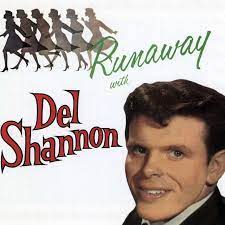
Runaway was a song written by a guy named Charles Westover, (who changed his name to Del Shannon), and a keyboard player named Max Crook. Max had built a keyboard with a unique sound and he called it a Musitron.
When their manager persuaded them to record the song they had no idea it would peak at #1 on Billboard in the US and three weeks later top the charts in the UK. The song can be found on the 1961 album "Runaway With Del Shannon".
A standard tuning song with some lead from the keyboard here from Del Shannon using the chords Am, G, F, E, E7, Gbm and D. Play a root down up root up down up rhythm pattern.
Jump To Top
Eddie Cochran Songs (4)

Hallelujah I Love Her So is a song originally written and recorded by Ray Charles, in 1959. Cochran's rendition features his signature rockabilly style, with a prominent guitar riff and driving rhythm section but was never released as a single.
The song showcases Cochran's smooth vocals and impressive guitar skills, with a solo that incorporates bluesy bends and fast runs up and down the fretboard. The track was released as a single and performed moderately well on the charts, cementing Cochran's reputation as a skilled interpreter of other artists' songs.
You will have a bit of lead in this one in standard tuning playing the chords G, G6, C, C#7, D7, Gdim, E7, Em and A7. I use a root up down root up down up rhythm pattern.
Jump To Top Of Popular Music From The 50s

I Remember is a touching ballad that Eddie Cochran recorded in 1959, just a year before his untimely death.
The song is notable for its tender lyrics, which reflect on past memories of love and loss. Cochran's emotive vocals are backed by a simple arrangement featuring acoustic guitar, bass, and drums, which allows the poignant lyrics to take center stage.
Although "I Remember" was not a major commercial
success at the time of its release, it has since become a fan favorite
and is widely regarded as one of Cochran's most heartfelt recordings.
Use a down up down down down down down and repeat rhythm pattern in standard tuning with some lead work required. I play the following chords C, Am, F, G, C7, Em, Dm, G7 and A7.
Jump To Top

Jeannie Jeannie Jeannie is a high-energy rock 'n' roll song that Eddie Cochran recorded in 1958. The track features a driving rhythm section and a catchy guitar riff that is instantly recognizable. Cochran's vocals are infused with a sense of playful energy, and his lyrics tell the story of a girl who has caught his eye.
Jeannie Jeannie Jeannie peaked at #98 in the US and after his death it was released again in the UK in 1961 and reached #33. It can be found on an album called "Legendary Masters Series". The Stray Cats also covered this number.
I play this one with a capo 2nd fret playing a down up down up down up rhythm pattern. A little picking in this one with the E, A and B7 chords.
Jump To Top

Twenty Flight Rock was a single release by Eddie Cochran back in 1957 but the song never charted. Eddie also appeared in the film "The Girl Can't Help It" with Jane Mansfield, where he performed the song in that movie.
Twenty Flight Rock also gained
notoriety for its role in the history of rock 'n' roll, as it was
famously performed by a young Paul McCartney during his audition for
John Lennon and the Quarrymen, which led to his eventual inclusion in
the Beatles.
The song was written by a lady named Nelda Fairchild and can be found on the album "Never To Be Forgotten", which was released after Eddie's death in 1960.
I play this one with a capo on the 2nd in standard tuning with the three chords C, C7 and D7. A little picking riff in here with a down up down up down up and repeat rhythm pattern.
Jump To Top Of Popular Music From The 50s
Fats Domino Songs (3)

Ain't That a Shame is a famous rock and roll song written by Fats Domino and Dave Bartholomew. Fats Domino recorded the song in 1955, and it became really popular. It reached number 1 on the R&B chart and number 10 on the pop chart.
The song is about feeling sad and disappointed because of a breakup. Fats Domino included it in his first album, "Rock and Rollin' with Fats Domino," released in 1956. The song's success helped Fats Domino become well-known in the rock and roll genre.
An interesting fact is that the original title was "Ain't It a
Shame," but it was changed to "Ain't That a Shame" for the single
release.
I play this one with Drop D Tuning in standard tuning and put a bit of lead in my version. For rhythm play down-strokes and a steady shuffle with bass notes with the chords A, A7, D and an E.
Jump To Top

Blueberry Hill was recorded 6 times in 1940, the same year it was published. The Glenn Miller Orchestra had the biggest hit with the song that year reaching #2 in the US.
Fats Domino had a #1 on the R&B charts and a #2 Pop Hit when he released his version in 1956. Even Russian President Putin covered the song on Dec 10th 2010 in a benefit show for sick kids.
Capo on the 3rd fret in standard tuning is where this one works best play the chords G, C, D, Am7, Gb, Bm, B7, D7 and Cm. For rhythm play a down down up down down up and repeat with walking bass. A bit of lead required in this lesson.
Jump To Top Of Popular Music From The 50s

I'm Walkin became a #1 hit on the R&B chart by Fats Domino in 1957. Others covered the song including Ricky Nelson, Nancy Sinatra and Tom Petty.
The song hails from the album "Here Stands Fats Domino".
Capo on the 2nd fret is the original key playing the chords G, D, C, G7 and a Cm. For rhythm play a down up down up and repeat with walking bass blended into the rhythm. I add a bit of lead in my version here.
Jump To Top
Frankie Avalon Songs

Venus was a single by Frankie Avalon and first released in 1959 and then again in 1976. The original version top the Billboard Hot 100 chart in 1959 where the 2nd released made it to #46 and had a bit of a disco vibe to it. Frankie is quoted as saying that he preferred the original version.
Play this one in standard tuning with the chords Amaj7, D, E, Bm, Gbm, Abm and a Dmaj7. No lead but you wan work in a riff as you play a root down up root up down up rhythm pattern.
Jump To Top
Jerry Lee Lewis Songs (2)

Just Dropped In was considered a psychedelic rock song written Mickey Newbury. Jerry Lee Lewis first recorded the song in May of 1967. But it was Kenny Rogers and The First Edition who released their version later that year and scored a #5 hit.
I don't believe Jerry Lee Lewis released his version as a single but it can be found on the album "Soul My Way".
The rhythm here is a steady root down root up down up using the chords Dm, A7, G and a Gm. There is a little picking for the acoustic player in this tune played in standard tuning.
Jump To Top Of Popular Music From The 50s

Whole Lotta Shakin was first recorded by Big Maybelle in 1955, but the 1957 version by Jerry Lee Lewis is the one most people know best because he radically changed the vibe.
He said he'd knew it would be a hit when he cut the song at Sun Studios in Feb 1957. It hit #3 on Billboard and #1 on the R&B Charts.
This track can be found on the "Original Hits Vol 1" album from 1969.
You can play this one in standard tuning using a down up down up down up down up and repeat rhythm pattern with the chords C, F, G, G7 and a C7. A bit of lead in this lesson.
Jump To Top
Jimmy Rodgers Songs

Honeycomb is a song recorded by Jimmie Rodgers, but it was released in 1957. The song was written by Bob Merrill.
The song was a major hit and reached No. 1 on the Billboard Hot 100
chart in 1957. The success of "Honeycomb" contributed to Jimmie Rodgers'
prominence in the music scene during that time.
In the song "Honeycomb," the term "honeycomb" is used metaphorically to describe the sweetness of love. The song was never released on an album.
I play this one in standard tuning with a rhythm pattern of root down up bass up down up . There is a bit of picking in this one while playing the chords G, C, D, G7 and D7.
Jump To Top Of Popular Music From The 50s
Johnny Rivers Songs (9)
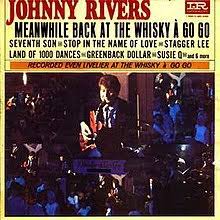
7th Son
is not a song by Johnny Rivers. The song "The Seventh Son," is
actually a blues song written by Willie Dixon and recorded by various
artists. It was first released by Willie Mabon in 1955 and has since
been covered by numerous musicians, including Johnny Rivers.
Johnny Rivers included a rendition of "The Seventh Son" on his album "Meanwhile Back at the Whisky à Go Go," released in 1965. However, it's important to note that the song did not chart as a single for Johnny Rivers.
"The Seventh Son" is a blues standard that revolves around
the superstition of the seventh son of a seventh son possessing special
powers and abilities.
This one has a quick down down up down down up down up pattern in the chorus and just chops in the verse for a rhythm pattern in standard tuning using the chords E, A and B7. There is lead work to do in this number.
Jump To Top

500 Miles is featured on Johnny Rivers' album "Johnny Rivers Rocks The Folk," released in 1965. The album showcased Rivers' folk-influenced style and included covers of various popular folk songs.
The song "500 Miles" was written by Hedy West, an American folk singer-songwriter. Her original version of the song was recorded and released in 1961.
Johnny Rivers' rendition of "500 Miles" did not chart as a single. However, the song gained popularity among folk music enthusiasts and fans of Johnny Rivers' music
This one is played in standard tuning with a simple root down up root up down up rhythm pattern using the chords G, Em, Am, C and D. No real lead work here, just a few riffs.
Chords & Lyrics
Jump To Top

Baby I Need Your Lovin is a popular song written by Holland-Dozier-Holland, a renowned songwriting and production team. The song was originally recorded and released by The Four Tops in 1964. Johnny Rivers included his own version of the song on his album "In Action!" in 1964.
Johnny Rivers' rendition of "Baby I Need Your Lovin'" did not chart as a single. However, it showcased Rivers' talent for covering and interpreting songs with his distinctive style.
For rhythm here you can play a down down up down up down up down up and repeat in standard tuning with the chords G, F, C, Am and a Cmaj7. There is no lead in this one.
Jump To Top Of Popular Music From The 50s

Memphis Tennessee was written by Chuck Berry, a legendary American rock and roll musician, and it was first released by Berry himself in 1959. Johnny Rivers included his own version of "Memphis" on his album "Johnny Rivers at the Whisky à Go Go," which was released in 1964.
Johnny Rivers' rendition of "Memphis" became a major hit for him. It reached number two on the Billboard Hot 100 chart in 1964 and solidified Rivers' popularity during that time.
The song showcases Rivers' energetic vocal delivery and his ability to infuse his own style into a classic rock and roll track.
In this one I use a Drop Tuning with the two chords A and D and a capo on the 2nd fret. A bit of lead work in this one as you play a down stroke rhythm pattern.
Jump To Top

Poor Side of Town was written by Johnny Rivers himself, along with producer Lou Adler. It was released as a single in 1966 and also included on Johnny Rivers' album of the same name, "Poor Side of Town."
The song achieved significant success on the charts, reaching the number one spot on the Billboard Hot 100 in 1966. It became Johnny Rivers' biggest hit and is often regarded as one of his signature songs.
"Poor Side of Town"
is a poignant ballad that tells the story of a person who finds
themselves in a place of poverty and despair.
For rhythm you can play a root down up root up down up or a root down up down up root up down up. No lead work in here, just play the chords Emaj7, Gbm, A, Abm, A, E, D, G, C, Bm, Am and a B7 in standard tuning.
Jump To Top Of Popular Music From The 50s

Secret Agent Man was written by P.F. Sloan and Steve Barri. It was recorded by Johnny Rivers and released as a single in 1966. The song was also included on his album "...And I Know You Wanna Dance."
"Secret Agent Man" achieved chart success, reaching number three on the Billboard Hot 100 in 1966. It became one of Johnny Rivers' biggest hits and has since become an iconic spy-themed song.
The song is about a fictional
secret agent who undertakes dangerous missions while living a double
life.
You can play this one in standard tuning with the chords Em, Am, B7, Bm and a C7. There is some lead work in this one while you play a steady down down up down up down up and repeat rhythm pattern in standard tuning.
Jump To Top

Slow Dancing was written by Johnny Rivers and Hal David. It was released as a single in 1977 and also included on Johnny Rivers' album "Outside Help."
While "Slow Dancing" did not reach the same chart success as some of Rivers' earlier hits, it still managed to make a modest impact, peaking at number 51 on the Billboard Hot 100 in 1977.
The song "Slow
Dancing" is about the intimate and tender experience of slow dancing
with a loved one.
I have a capo on the first here but not required as I play through the rhythm pattern which is a steady down up down up with a few accents here and there. Played in standard tuning with the chords G, C, D, Em, Bm, D/Gb, Am7, G6 and a D7 with no lead playing here.
Jump To Top

Summer Rain was written by James Hendricks and performed by Johnny Rivers. It was released as a single in 1967 and later included on his album "Rewind" released the same year.
The song achieved significant chart success, peaking at number 14 on the Billboard Hot 100 in 1968. It remains one of Johnny Rivers' notable hits.
"Summer Rain" tells a
nostalgic story of a summer romance. The lyrics paint a vivid picture of
a brief but intense love affair that takes place during a summer
season.
Several rhythm patterns in this one beginning with a down down down up and you de-cend on the Am chord which is an Am, Am/Ab, Am/G, Am/Gb and then a down up pause up as you hit the F and C chords. There is some down-strokes in here as well with the other chords being E, Am, D7 and a G. A small bit of lead as you play this one in standard tuning.
Jump To Top Of Popular Music From The 50s

The Tracks of My Tears was originally written by Smokey Robinson, Warren "Pete" Moore, and Marv Tarplin, and it was first recorded and released by The Miracles in 1965. Johnny Rivers covered the song for his album "Rewind," released in 1967.
While Johnny Rivers' version of "The Tracks of My Tears" is highly regarded, it did not achieve significant chart success as a single. However, the song has become a beloved classic and is recognized as one of Smokey Robinson's signature compositions.
"The Tracks of My Tears" is a soulful and introspective ballad that explores the theme of hidden sorrow behind a seemingly cheerful facade.
You can use a down down up down up down up rhythm pattern throughout with a few down strokes here and there. No lead work in standard tuning but a bit of a high sing in a few places. The chords you'll need are Dmaj7, Em, A, G, D, Gbm, C and an A7.
Jump To Top
Los Lobos Songs

We Belong Together is a song from 1958 and first recorded by the duo "Robert & Johnny" and was a #12 R&B hit for them. Ritchie Valens recorded the song in 1959 and had success with the song.
Los Lobos, who formed in LA in 1973, were chosen to record a version of the song in 1987 for the movie about Ritchie Valens life called "La Bamba".
The original key is a capo on the 3rd fret with the chords D, Bm, Em, A7, G, D7, Gm and E7. My picking is an arpeggio riff as you play thru this one and use a down down down up down down and repeat pattern.
Jump To Top Of Popular Music From The 50s
Melvin Endsley Songs

The Blues Don't Mean A Thing was one written and recorded by Melvin Endsley but the only reference to the song is on a rockabilly album called The Last Great Rockabilly Saturday Night.
Most of the artists listed on the album cover are not well known. Endsley himself had a successful career as a writer, penning over 400 songs, but his commercial success as a singer was limited.
For rhythm play a root down root up down up and repeat rhythm pattern with a little picking. For chords, play an A, D7, E, B7 and an E7.
Chords & Lyrics
Jump To Top Of Popular Music From The 50s
Otis Day & The Nights Songs
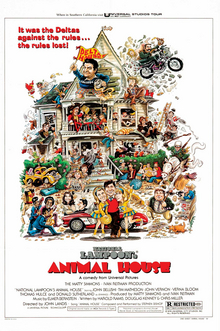
Shama Lama Ding Dong is a fun song from the 1978 movie National Lampoon's Animal House. Mark Davis wrote it, and it was performed by a fictional band called Otis Day and the Knights. Although DeWayne Jessie played Otis Day in the film, the vocals were actually sung by Lloyd G. Williams, with Melvin Britt and Sidney Juston doing backing vocals.
The song was popular and won an award in 1995. John Mellencamp covered it in 1987, and it's also played by the band Goose. It's been recorded by different groups like the University of California Men's Octet and the Dartmouth Aires.
This song is higher vocally than where I am here as it's original key is C and my demo here is lower in A. I'm playing with a capo 2nd fret so my four chords are G, Em, C and a D. For rhythm you'll need a root down up down up down up and repeat. I have a little lead section in this one.
Jump To Top
Ritchie Valens Songs (2)

Come On Let's Go hails from 1958 and was written by Ritchie Valens himself.
It peaked at #42 on Billboard and was one of four singles from his debut album "Ritchie Valens".
You can play this song in standard tuning with a down up down up up down up and repeat rhythm pattern playing the four chords A, D, G and E. A little picking in this number.
Jump To Top

Donna was recorded in Dec of 1958 as the A-side for a single which was to include La Bamba as the B-Side. The song peaked at #2 and his highest charting single of the 3 he managed to release before his death. The other was Come On let's Go.
This song appears on an album entitled "Ritchie Valens".
Capo this on on the 3rd fret in standard tuning using three chords, D, G and A. No picking here while playing a down down up down down down down rhythm pattern.
Jump To Top Of Popular Music From The 50s
The Crows

Gee was the only hit from this group who formed in 1951 and released this song in 1953. Many considered this song to be the first rock and roll song.
The song reached #14 on the Pop charts and #2 on the R&B charts.
The chords needed here are D, Bm, Em, A7, G, D7 and Ab while you play a little picking into the rhythm of down up down up down up. This one is played in standard tuning.
Jump To Top
The Teddy Bears

To Know Him Is to Love Him is a famous song by The Teddy Bears, written by Phil Spector. Spector got the idea from the words on his father's tombstone. The song was a big hit in 1958, reaching number one on the Billboard Hot 100 chart and number two on the UK's New Musical Express chart.
Even though The Teddy Bears didn't have a whole album with this song, it's still remembered as one of the greats of early rock and roll. Other artists like Peter & Gordon, Bobby Vinton, and Dolly Parton, Linda Ronstadt, and Emmylou Harris also had hits with it later on.
This one is full of chords which are D, G, A, A7, Bm, Bm/A, F, C, A#, D7, Dm, Gm and an E7. For rhythm you'll play a down down up down down down down and repeat. No lead break in the original version but I added one so it's optional.
Chords & Lyrics
Jump To Top Of Popular Music From The 50s
Thanks for dropping by my popular music from the 50s page and I hope you found some of the info here useful.
If you liked this popular music from the 50s page you might also like ... (click images)
Top Hits Of The 50s
